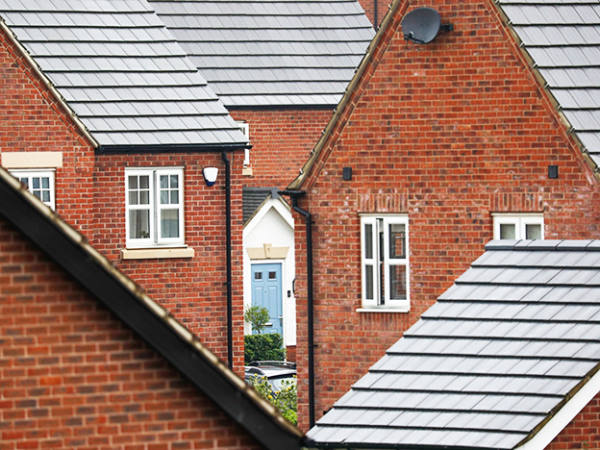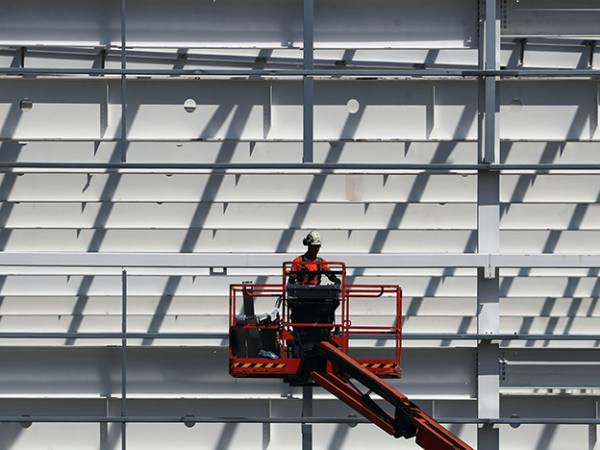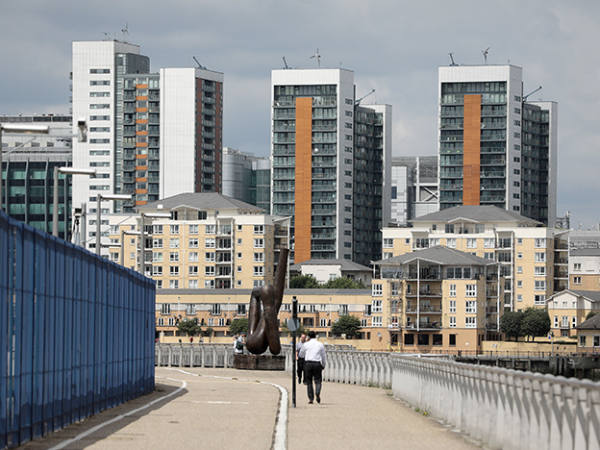- Tentative good news for landlords on the regulatory front
- Mortgage rates are down and rents are up
- But it will take a lot to make up for the increase in interest rates
Making the case for buy-to-let remains hard in current conditions. Physical property is a tax-inefficient investment, regulations are getting tighter, renters face limits to how much they can afford and mortgages are still very expensive. Both existing buy-to-let landlords and those who are thinking of dipping their toes into the market need to do the maths carefully to make sure their investments add up.
Still, on a smaller scale, some pieces of good news have recently emerged. Rental growth has been strong, borrowing rates have started to ease and the regulatory backdrop is looking slightly less daunting than it did a year ago.
Regulatory updates
In September, the government scrapped plans to introduce a Minimum Energy Efficiency Standard rating of C for rented homes, which was originally expected to apply from 2025. Chris Norris, director of policy at the National Residential Landlords Association (NRLA), said that while it would be “naive” to assume that the policy would not come back at all, it meant that there were no longer “lots of landlords panicking about how quickly they might have to carry out very expensive works”.
Then in October, the government made a last-minute change to the long-awaited Renters Reform Bill, which will introduce a landlord database and had intended to abolish ‘Section 21’ no-fault evictions. The government has said the abolition of these evictions will now only happen once the courts system has been improved, so that it becomes quicker for landlords to evict a tenant when they do have a good reason to do so. The NRLA had lobbied heavily for this change.
Despite these shifts, a lot of uncertainty remains. There is currently no clear timeframe for when the courts might be reformed. The Renters Reform Bill itself has yet to become law, although Norris says there is a prospect it will do so before the next election. And if Labour wins that election, there might be further changes.
Angela Rayner replaced Lisa Nandy as shadow housing secretary in September. Since then, the party has not said much about its plans for the rental market, but its policies currently include introducing a new ‘decent homes standard’ for rental properties, the immediate end of no-fault evictions and looking at “further measures to support private tenants with unsustainable rent costs and give people more power in their own home”.
Norris says the policy divide between Labour and the Conservatives doesn’t look huge, as things stand. He believes that if the Renters Reform Bill goes through, it wouldn't be an immediate priority for a Labour government to introduce further changes. “But if this bill runs over time, we're quite likely to see Labour start with their own reform. They probably want to get to the same end point, but they might have a very different way of going about it,” he suggests.
There is one other piece of news: the Autumn Statement included a proposal to make splitting a house into two flats easier under the planning system, which is helpful for landlords. Tom Bill, head of UK residential research at Knight Frank, argues that this was actually “the first bit of good news for landlords in a long time”.
Rental growth and interest rates
Ultimately, the latest updates do not change the fact that the buy-to-let market is becoming more strictly regulated. Similarly, improvements on the financial front do not make up for the steep increase to mortgage costs caused by the rise of interest rates.
Aneisha Beveridge, head of research at Hamptons, notes the high proportion of landlords who have a mortgage on their property, mean they are on average more exposed to higher interest rates than typical owner-occupiers. Since the summer, rates have started to come down and rents have continued to rise, “easing some of those pressures, but not getting rid of them altogether”, she says.
As of 29 November, the average two-year buy-to-let mortgage rate for all loan-to-values was 6.08 per cent, according to Moneyfacts data. As the chart below shows, this is down from a peak of 6.88 per cent back in August, but is still far higher than it was two years ago. The Bank of England is expected to start cutting rates sometime in 2024, but the decline could be gradual, depending on how the economy fares.
Meanwhile, rising numbers of landlords with mortgages have been feeling the pinch as their fixed-rate deals expire. A 3 per cent increase in interest rates equates to an additional interest rate cost of £250 a month for every £100,000 borrowed, meaning it takes a huge level of rental growth to compensate. Year-on-year rental growth across the UK hit a decade-high of 12 per cent in August, according to Hamptons. Between 2015 and 2019, rents only increased by around 2.5 per cent a year on average.
The current level of growth looks unsustainable in the long-term, although analysts expect it to remain strong in 2024, as demand for properties continues to exceed supply and more landlords put rents up as their fixed rate mortgages expire. Savills researchers are expecting average rents across the UK to increase by 6 per cent in 2024.
But forecast rental growth decreases to 3.5 per cent in 2025, as rents start hitting the “affordability ceiling”, where further rent increases do not exceed income growth. This is already close to happening in London, Savills says, where rents have increased at a vertiginous pace over the past two years (amounting to a cumulative 31 per cent growth rate).
Opportunities wanted?
Another key piece of the buy-to-let equation is house prices, which did not tumble as much as some had expected in 2023. According to the Nationwide house price index, UK house prices were down 5.3 per cent year on year in August and September, but this had already partially recovered by November to stand at a 2 per cent annual decrease.
Robert Gardner, chief economist at Nationwide, argues that “a rapid rebound still appears unlikely”. “Cost-of-living pressures are easing, with the rate of inflation now running below the rate of average wage growth, but consumer confidence remains weak, and surveyors continue to report subdued levels of new buyer enquiries,” he says. Residential property transactions were down by 21 per cent year on year in October, according to HMRC data.
All of this paints a mixed picture for buy-to-let investors. Those who are considering buying will need to chase higher yields to make new investments work, plausibly by looking at higher-yielding areas such as the north-east and favouring smaller properties with fewer bedrooms. Lower house prices and sustained rental growth do translate into higher overall yields, but making up for skyrocketing mortgage costs remains hard.
Beveridge says that while trying to time the market is tricky, interest rates peaking should help put a floor under further price falls, and Hamptons forecasts that house prices will remain stable in 2024 and grow by 3 per cent the following year, which would put us close to the bottom of the market. Savills is a bit more bearish and forecasts a further 3 per cent fall in mainstream UK house prices over the course of 2024. While this suggests there could be some attractive deals on the market for cash buyers, Knight Frank’s Tom Bill points out those who hope for a fire sale are likely to be disappointed.
On the sales side, data suggests that the landlord exodus has actually slowed down this year after peaking in 2022. NRLA’s Norris says that there hasn’t been a mass exit from the market among the organisation’s membership base – typically landlords with several properties have been selling one or two to pay off debt, while retaining a core portfolio. But the long-term trend had been negative well before interest rates started rising – according to Hamptons data, more landlords have sold properties than bought them in every year since 2016.
| Savills' housing market forecasts | ||||||
|---|---|---|---|---|---|---|
| 2024 | 2025 | 2026 | 2027 | 2028 | Total | |
| UK house prices | -3% | 3.5% | 5% | 6.5% | 5% | 17.9% |
| London house prices | -4% | 2% | 4% | 6% | 5.5% | 13.9% |
| UK rents | 6% | 3.5% | 3% | 2.5% | 2% | 18.1% |
| London rents | 5.5% | 3.5% | 3% | 2.5% | 2.5% | 18.2% |
| Figures refer to mainstream and not prime properties. Source: Savills Research | ||||||
For investors, the overall picture remains less than rosy. Physical property is a time-consuming investment, the available tax reliefs are not what they used to be and mortgages are expensive. Cash investors fare a little better, but without juicing returns with debt, the competition from other assets is strong.
As Ian Futcher, financial planner at Quilter, puts it: “Average yields on property currently stand at around 4.75 per cent whereas fixed-rate bonds offer 5.9 per cent and will not ask you to fix the boiler, so it’s easy to see the temptation to ditch your properties and move to cash.” If buy-to-let issues continue to bite, other asset classes may soon look relatively attractive, too.













